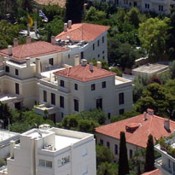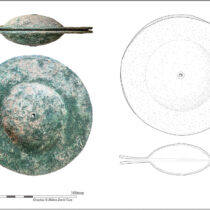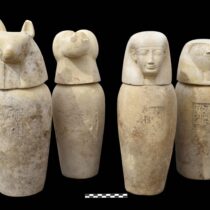Archaeologists from Museum Odense have discovered more than 50 exceptionally well-preserved skeletons in Åsum, east of Odense. These skeletons were buried with artifacts from far beyond Denmark’s borders, confirming that the Vikings traveled extensively for trade.
Over the past six months, archaeologists from Museum Odense have unearthed more than 50 viking graves in Åsum, east of Odense. The well-preserved skeletons may provide researchers with deeper insights into the daily lives of ancestors who lived in the area during the 10th century, when Gorm and Thyra ruled in Jelling. According to archaeologist and museum curator Michael Borre Lundø from Museum Odense, the skeletal remains could help explain more precisely what the Vikings lived on and how far they traveled to trade with others.
Michael Borre Lundø says: “It is truly unusual to find so many well-preserved skeletons at once, like those discovered in Åsum. This discovery offers extraordinary opportunities to perform a wide range of scientific analyses, which can reveal more about the general health, diet, and origins of those buried. The analyses might even reveal whether the buried vikings were related, which would be particularly significant, as this has never been examined in similar graves.”
The importance of the find is confirmed by Sarah Croix, associate professor and PhD from the Department of Archaeology and Heritage Studies at Aarhus University.
“The graves in Åsum are so well-preserved that it may be possible, for the first time, to conduct special aDNA analyses on most of the skeletons—meaning DNA analyses on ancient material. It will be incredibly exciting to learn where these people came from and whether the same families were buried here across multiple generations,” Sarah Croix says.
According to Michael Borre Lundø, several of the skeletons in Åsum belonged to high-status individuals in society, as seen from the grave goods they were buried with. One grave in particular stands out: A woman was buried in a wagon, the upper part of a Viking cart used as a coffin.
Michael Borre Lundø says: “The woman was buried in the wagon she likely traveled in. We must imagine that she was buried with her finest clothes and belongings. She was given a beautiful glass bead necklace, an iron key, a knife with a silver-threaded handle, and, most notably, a small shard of glass that may have served as an amulet. At the foot of the wagon, there was a finely decorated wooden chest, the contents of which we still do not know.”
Another grave, besides the deceased, contains a fine bronze three-lobed brooch, a single red glass bead that hung on a cord around the deceased’s neck, an iron knife, and a small piece of rock crystal.
“Rock crystal does not occur naturally in Denmark and was likely imported from Norway. Several items from the many graves in Åsum indicate that the buried Vikings were connected to international trade networks that developed during the Viking Age,” Michael Borre Lundø says.
Museum Odense’s archaeologists also assess that the discovery of the Viking burial ground clearly shows that the village of Åsum held great significance during the Viking Age and that the area was one of the central settlements in the hinterland of what would later become Odense.
Michael Borre Lundø says: “It’s fascinating to imagine that the buried Vikings were undoubtedly aware of the nascent urban development that took place just five kilometers west of where they lived, then known as Odins Vi. Their descendants witnessed the cementing of Odense as a town, while Harald Bluetooth constructed one of his ring forts—Nonnebakken—south of the river as part of his effort to unify the kingdom.”
Facts about the Viking burial ground in Åsum:
-The Viking burial ground covers approximately 2,000 square meters and is located on the southern outskirts of the village of Åsum, east of Odense.
-Archaeologists estimate that the burial ground was used during the 9th and 10th centuries.
-Museum Odense’s archaeologists have been excavating the site for six months.
-A total of 50 inhumation graves and five cremation graves have been found, placing the burial ground among the largest Viking burial sites discovered on the island of Funen.
-The excavation took place in preparation for Energinet’s work to renovate the electrical grid.
-The discovery confirms that Åsum was a key geographical point for the earliest urban developments, which eventually led to the formation of Odense.





